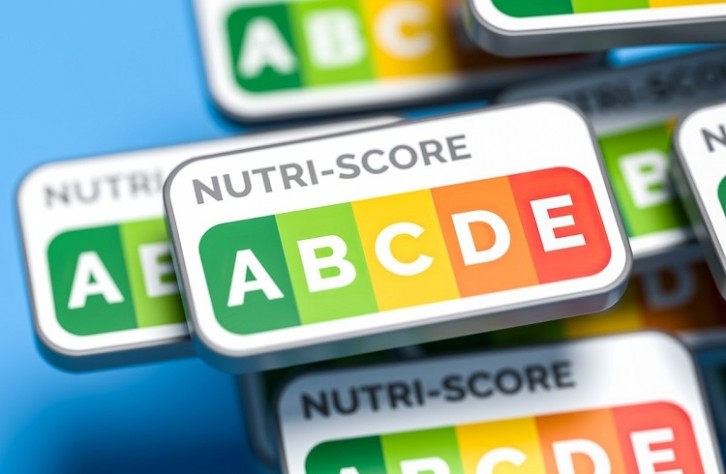Why is Danone removing Nutri-Score?

Nutri-Score is Europe’s most prominent front-of-pack nutritional label, using a five-colour, A to E rating to classify a food’s level of health. It is based on the UK Food Standards Agency's (FSA) nutrient profiling system, and has been officially adopted by France, Belgium, German, Luxembourg, the Netherlands, Spain, Switzerland, and most recently, Portugal. Several countries, notably Italy, have opted out.
Now, dairy major Danone has announced it plans to remove Nutri-Score from its dairy and plant-based drinkable products, starting this month. According to Danone, the reason for their decision is a change in the way that Nutri-Score assesses dairy products.
Why is Danone removing Nutri-Score?
Nutri-Score has recently reassessed how it classifies dairy beverages. Previously, milk and milk-based drinks have been considered ‘general food’ by the labelling scheme. As of 2024, the parameters have changed, meaning that liquid dairy products are now part of the ‘beverages’ category.
This has meant that, for example, skimmed and semi-skimmed milk is downgraded from A to B, and whole milk from B to C (scoring lower due to its fat content). In the beverage category, it is only water than can achieve A.
“At Danone, we have always supported consistent science-based, interpretive nutrition labelling and were pioneers in displaying, on a voluntary basis, the Nutri-Score on our packaging in Europe. However, we do not agree with the revision of the algorithm which switches drinkable dairy and plant-based alternatives into the beverage category,” a Danone spokesperson said in a statement.
“This development gives an erroneous view of the nutritional and functional quality of drinkable dairy and plant-based products, not in line with food based dietary guidelines in Europe. It leads to confusion among consumers with different Nutri-Score scoring for products having similar nutritional purposes in our diet while being in a different format.”
Is milk a beverage?
The main reason of Danone’s decision to withdraw Nutri-Score from its products comes from the change of its products from the ‘general food’ category into the ‘beverage’ category, which has different parameters.
According to Alexander Anton, secretary general at the European Dairy Association, milk’s initial classification “recognised the natural nutrient density of milk with its high-quality protein and many minerals and vitamins. Many nutrition guidelines distinguish milk from thirst quenchers.”

Milk, he told FoodNavigator, belongs in the ‘animal foods,’ and not the ‘beverages,’ category. “Milk is not primarily intended to hydrate but rather to nourish by providing great nutritional richness.”
Milk products, he stressed, are recommended for daily consumption in the official dietary guidelines of the countries officially engaged in Nutri-Score.
The European Dairy Association also rejects the idea that drinkable yoghurts should be considered drinks, pointing out that soups are still considered to be in the category of foods. Within the beverage classification, Anton told us, most flavoured yoghurts would score E.
Beyond nutrition, Anton also cited consumer confusion. “Using different ratings for yoghurts in bottle and yoghurts in pots will confuse consumers as they are similar foods, placed side by side in fridges at point of purchase,” he told us.
“On top of being part of the same food group, and of being placed side by side on supermarkets fridges’ shelves, they have similar nutritional composition as they are made using the same ingredients (mainly milk) and processes (e.g., fermentation, stirring).”
Thus, he suggested, by giving them a different rating, Nutri-Score is going against its stated object of allowing consumers to compare the nutritional value of similar foods.
Lastly, he points out that many dairy products cannot be reformulated due to regulation.

Why did Nutri-Score change?
Nutri-Score, according to Serge Hercberg, professor of nutrition at Université Sorbonne Paris Nord and a key figure in the development of Nutri-Score, was updated to keep in line with public health recommendations.
Danone’s dairy products, such as yoghurt drinks, sweetened milk drinks and plant-based drinks, sometimes contain up to 10 to 13g of sugar per 100ml, similar levels to that in soft drinks. Their classification as foods, he suggested, allowed them to get a more favourable classification than, in his view, they deserved.
Other front-of-pack labelling
Alongside Nutri-Score, several other front-of-pack labelling schemes have been introduced in Europe. These include:
- Traffic lights (UK) - Used by the UK, this front-of-pack labelling system categorises levels of nutrients in a product as either green (most health), amber or red (least healthy).
- NutrInform Battery (Italy) - Developed as an alternative to Nutri-Score following Italy's opposition to the scheme, NutrInform Battery operates similarly to the UK's traffic lights, with bars showing percentages of energy, fats, saturated fats, sugars and salt within a portion of a product.
- Keyhole (Nordic countries) - Instead of providing foods with a score, the green Keyhole logo is given to products that fulfil certain health criteria.
“They were abnormally classified as A or B with the calculation method for general foods that was initially used,” he told FoodNavigator.
The changes in Nutri-Score, he told us, “ensures better harmonisation between the information provided by the Nutri-Score and current public health nutritional recommendations aimed at limiting the consumption of sugary drinks.”
It will only be the sweetened versions of these dairy products that are penalised by the revisions, he told us, while the unsweetened versions will retain the score of B, still a green rating and therefore suggesting healthiness.
The new system also introduces a greater span of categories, allowing consumers the ability to more accurately gauge the difference between dairy products. Before, these products were graded between A and B, whereas with the change they will be graded B to E, with the level of added sugar making a greater impact on their classification.
He also takes issue with Danone’s suggestion that the solid and liquid forms of their products with the same sugar content have the same affects on health.
“As the Scientific Committee pointed out in its report, solid and liquid forms of yoghurt do not have the same benefits in terms of their potential effect on health.
“Evidence suggests that liquid forms are not associated with the same beneficial effects as solid fermented products. Some studies also suggest that free sugars added to drinkable yoghurts may be significantly more unfavourable than those added to solid yoghurts.”
Alongside nutritional differences, he stressed, drinkable yoghurts and solid yoghurts fulfil different functions for consumers. Solid yoghurts are often eaten at the end of a meal, while drinkable yoghurts are consumed outside of mealtimes. They are also easy to use by design and can be attractive to children and teenagers.


























